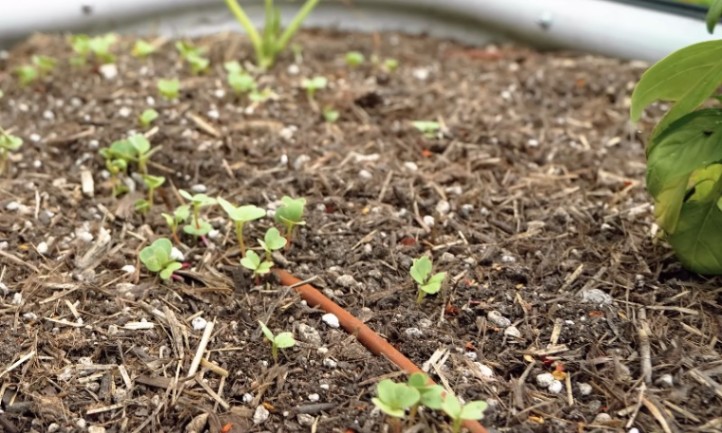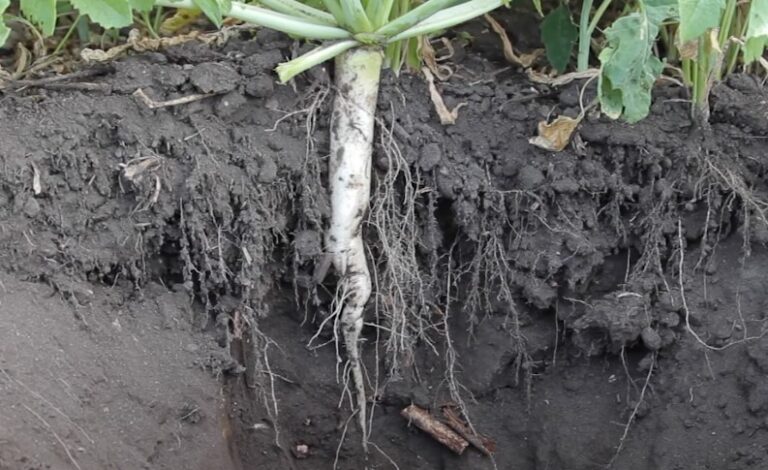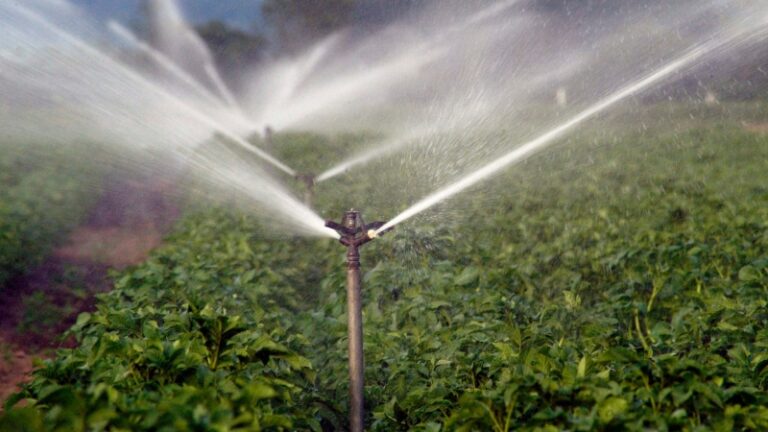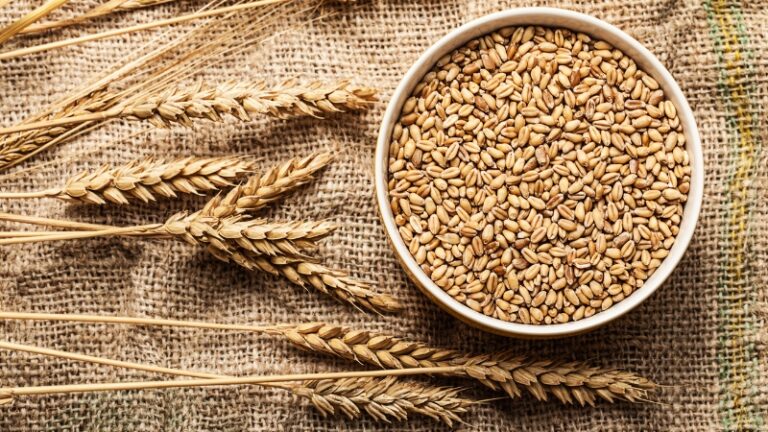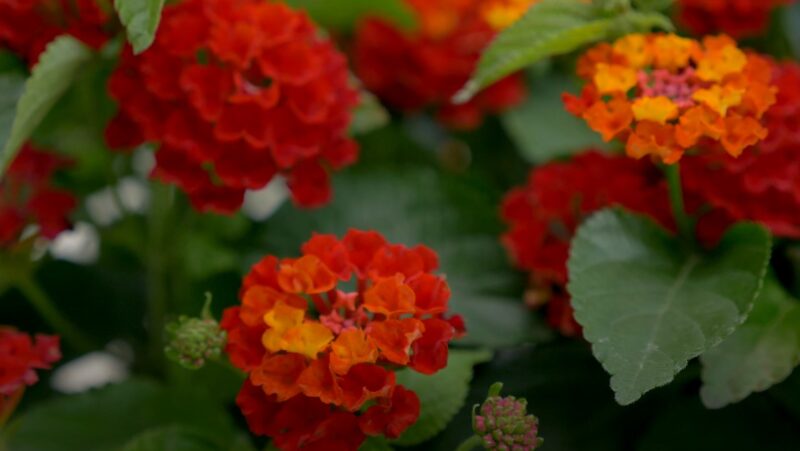Southern California’s climate offers unique gardening challenges and opportunities. With its sunny days, occasional droughts, and diverse environments, choosing the right ground cover plants can make a significant difference in your garden’s health and beauty.
As a local gardening enthusiast, I’ve found that native ground cover plants not only thrive in our climate but also bring a natural, harmonious look to any landscape. Let’s explore some excellent ground cover options that are perfect for Southern California gardens.
13. Gazania
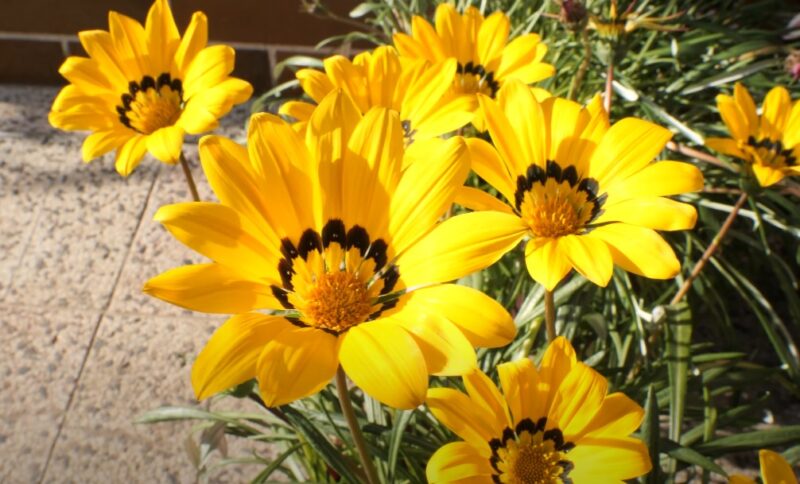
Ideal for: Adding colorful ground cover in dry, sunny areas.
Gazania, native to southern Africa, produces large, colorful blooms that brighten up any garden or a greenhouse. It’s an excellent choice for borders and flowerbeds, and its drought-tolerant nature makes it perfect for Southern California’s climate.
- Gazanias are native to southern Africa and are commonly known as “Treasure Flowers.”
- These plants thrive in harsh, dry climates and are well-suited for rocky cliffs and grassy hills.
- Gazanias are drought-tolerant, making them an excellent choice for ground cover in Southern California and other dry regions.
- The plant produces bright, daisy-like flowers that can add vibrant color to pathways and the edges of flower beds.
12. Spanish Daisy
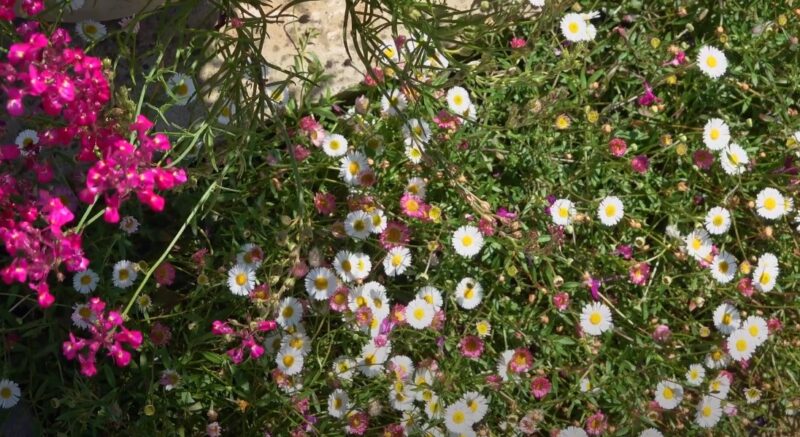
Ideal for: Creating vibrant, low-maintenance ground cover in dry, sunny gardens.
Spanish Daisy is a fast-growing perennial that spreads quickly, making it an ideal ground cover for large areas. Its daisy-like flowers add a cheerful touch to the garden, and it thrives in sunny spots with well-drained soil.
- Spanish Daisy is highly drought-tolerant, making it an excellent choice for dry, warm climates like Southern California.
- It produces an abundance of white, pink, and magenta flowers from spring through fall, providing long-lasting color in gardens.
- This plant can thrive in various settings including rock gardens, containers, hanging baskets, and as a cascading cover over walls.
- It requires minimal care once established, thriving in well-draining soil with moderate growth rate and evergreen foliage.
11. Silver Carpet
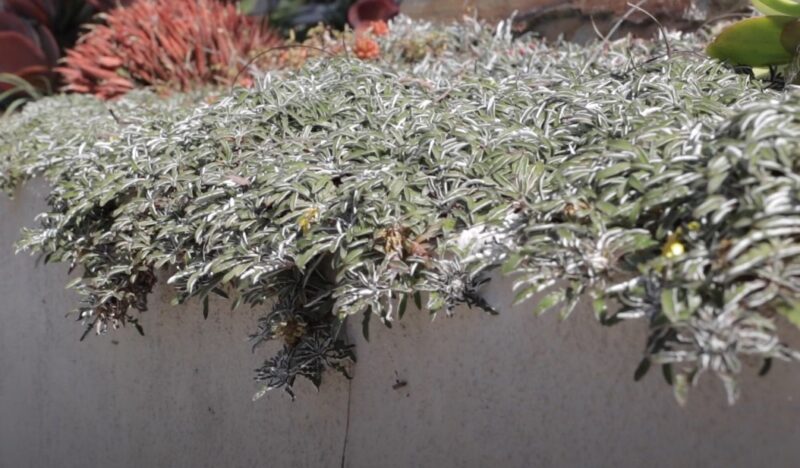
Ideal for: Low-water landscaping and areas with full sun exposure.
Silver Carpet is another excellent low-water ground cover. Its silver-gray leaves create a striking contrast in the garden, and it can survive in salt spray, making it ideal for coastal areas. This plant forms a dense mat, helping to suppress weeds and retain soil moisture.
- Silver Carpet is native to the coastal plains of South Africa.
- This plant forms dense mats that grow only 1-2 inches tall, making it an excellent ground cover.
- It tolerates full sun and heat, and is adapted to low amounts of supplemental water during summer.
- During summer, Silver Carpet produces small, yellow daisy-like flowers, adding a splash of color to gardens.
10. Lantana
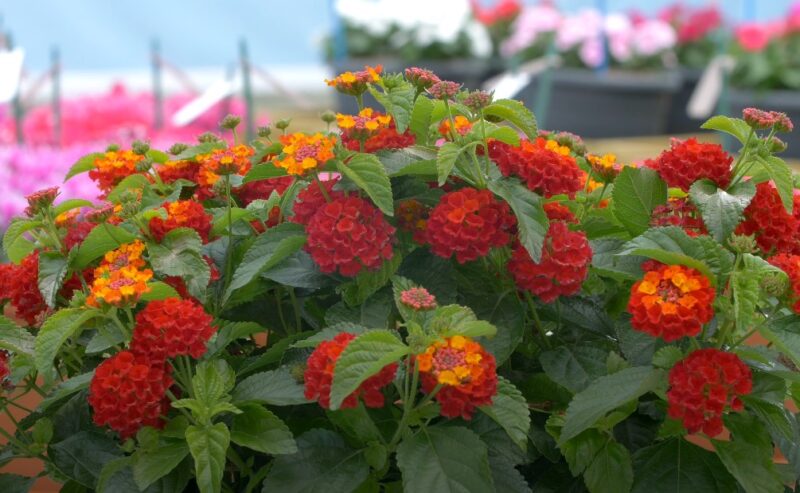
Ideal for: Providing vibrant, low-maintenance ground cover in sunny areas.
Lantana is a popular ground cover known for its vibrant flowers that come in various colors. This drought-resistant plant attracts butterflies and adds a splash of color to any garden. It’s a hardy plant that can handle the heat and dry conditions typical of Southern California.
- Lantana is an evergreen plant that is drought-tolerant, making it an excellent choice for dry climates like Southern California.
- The plant blooms continuously and attracts bees and butterflies, enhancing the biodiversity of your garden.
- Lantana has a fast growth rate and spreads densely, making it ideal for covering large areas quickly.
- Lantana is generally resistant to pests, including the Lantana Lace Bug, which often affects other varieties of Lantana.
9. White Creeping Thyme
Ideal for: Full sun to partial shade, well-drained soil
White Creeping Thyme is a low-growing ground cover that reaches only 3 inches tall and spreads up to 2 feet wide. This plant thrives in full sun to partial shade and prefers well-drained soil. Its white flowers and fragrant foliage make it a delightful choice for garden borders.
- White Creeping Thyme makes a beautiful and fragrant ground cover. Its low-growing mats are covered in tiny white flowers in late spring, attracting pollinators and adding aesthetic value to gardens.
- This plant is ideal for low-maintenance gardening as it requires minimal watering once established and does not need mowing. Its prostrate and spreading growth pattern makes it an excellent lawn alternative.
- White Creeping Thyme prefers well-drained soil with a bit of grit and thrives in sunny areas. It’s also quite resilient and can tolerate some foot traffic, making it suitable for paths and between stepping stones.
- Specifically well-suited for Southern California’s climate, White Creeping Thyme can handle drought conditions and still maintain its lush green foliage and vibrant blooms throughout the growing season.
8. ‘Huntington Carpet’ Trailing Rosemary
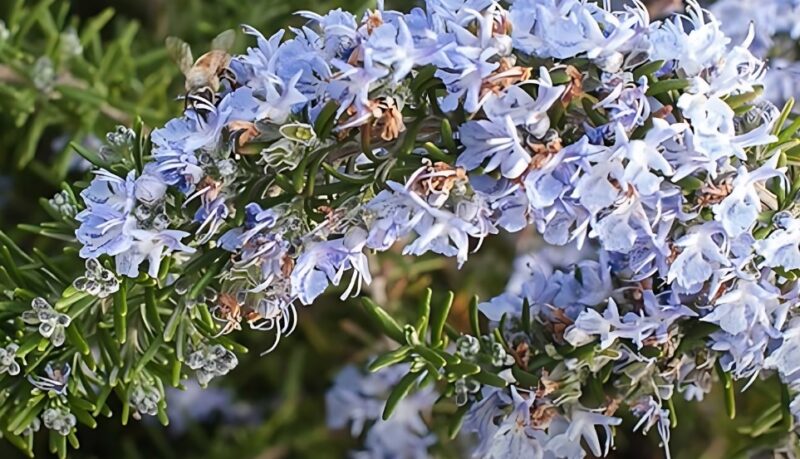
Ideal for: Full sun, well-drained soil
Trailing Rosemary is both a culinary herb and an attractive ground cover. It can grow up to 18 inches tall and spread up to 4 feet wide. Its aromatic leaves and blue flowers attract pollinators, making it a beneficial addition to any garden.
- ‘Huntington Carpet’ Trailing Rosemary is highly drought-tolerant, making it an excellent choice for water-wise gardening in Southern California.
- This variety requires minimal maintenance, with little to no pruning needed, making it an easy-to-care-for ground cover.
- It grows 12 to 16 inches tall and spreads 4 to 8 feet wide, creating a dense, sprawling groundcover ideal for large areas, slopes, and erosion control.
- The plant features dark-green, needle-like foliage with bright blue flowers, providing both visual appeal and a refreshing fragrance.
7. Blue Chalk Sticks
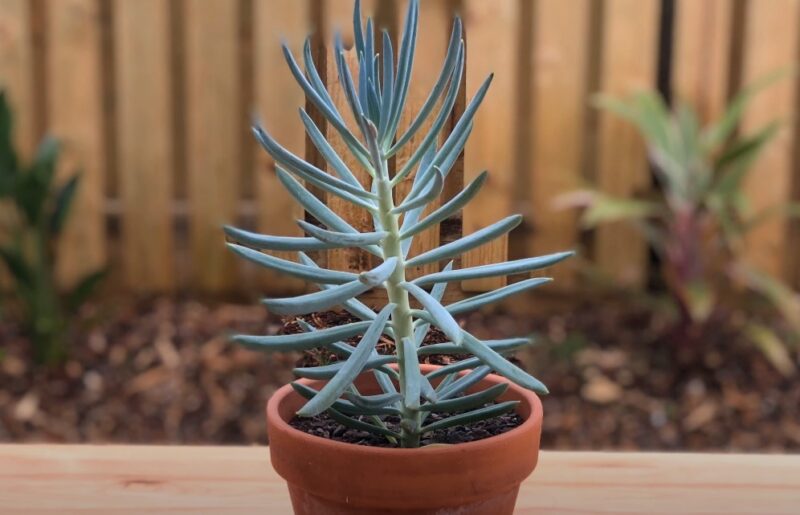
Ideal for: Full sun to partial shade, well-drained soil
Blue Chalk Sticks is a succulent ground cover that adds a modern touch to any garden. Growing up to 10 inches tall and spreading up to 3 feet wide, this plant is perfect for sunny areas with well-drained soil. Its blue-gray foliage provides a striking contrast to other plants.
- Blue Chalk Sticks is a low-growing succulent with blue-gray, pencil-like leaves. It can form a dense mat, reaching up to 24 inches in width, making it an excellent ground cover.
- Native to South Africa, this plant is highly drought-tolerant and requires minimal water once established. It is a great choice for xeriscaping and water-wise gardens.
- This plant thrives in sandy, well-drained soils and prefers full sun to light shade. It is adaptable to various soil types as long as drainage is adequate.
- Unlike many succulents, Blue Chalk Sticks is a winter grower and becomes dormant in the summer. This makes it an interesting addition to gardens that need year-round visual interest.
6. Pink Knotweed
Ideal for: Full sun to partial shade, well-drained soil
Pink Knotweed is a low-growing ground cover that reaches 3 to 6 inches tall and spreads up to 20 inches wide. It thrives in full sun to partial shade and prefers well-drained soil. Its pink flowers and green foliage create a charming carpet-like effect.
- Pink Knotweed grows well in both sun and shade. In regions like Southern California, it appreciates some afternoon shade during the summer.
- Once established, Pink Knotweed is drought-tolerant. This makes it an excellent choice for water-efficient gardens in Southern California.
- This plant spreads quickly through rooting stems and self-seeding, making it perfect for filling in around border perennials and shrubs.
- Pink Knotweed has attractive leaves and is covered in pink flowers. It remains evergreen, providing year-round ground cover.
5. Brownhead Rush
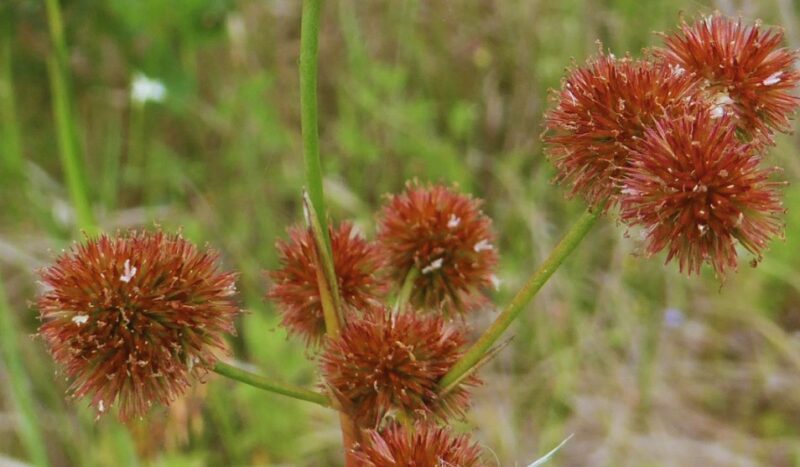
Ideal for: Seasonally wet areas, particularly in coastal regions
If you have a garden area that tends to be wet, Brownhead Rush is a great option. This plant thrives in seasonally wet conditions and adds a unique texture to your landscape with its rush-like appearance.
- The Brownhead Rush is native to the coastal regions of California, extending north to Oregon and Washington. It thrives in moist environments, making it well-suited for coastal prairies and wetland areas.
- This plant resembles sedges or irises due to its flattened stems and leaves, which differentiate it from typical round-stemmed rushes.
- The Brownhead Rush is a perennial plant that provides good cover for nesting waterfowl and other wildlife, contributing to the biodiversity and ecological health of wetland habitats.
- The plant typically grows up to 2 feet tall and features a distinctive round, brown head at the tip of its stem, which is its inflorescence.
4. Heuchera hirsutissima
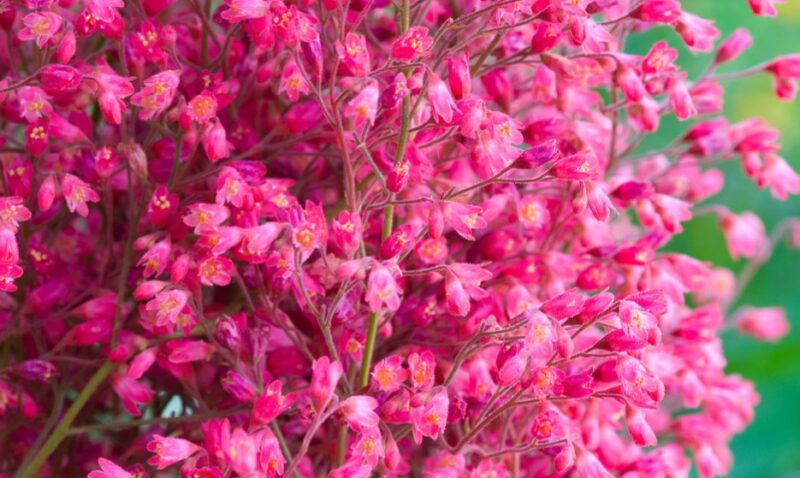
Ideal for: Pocket gardens
Heuchera hirsutissima, with its compact size and attractive foliage, is perfect for small spaces or pocket gardens. This plant is known for its striking leaves, which come in various colors, adding visual interest to your garden all year round.
- Heuchera hirsutissima, also known as shaggy-haired alumroot, is native and limited to California. It primarily grows in the San Jacinto Mountains of Riverside County, California.
- This species thrives on rocky slopes at elevations between 4,000 and 10,000 feet. It is adapted to dry, shady areas, making it suitable for similar garden conditions.
- Heuchera hirsutissima features tall, saturated coral-pink flowers that rise from a low cushion of small, bright green, ruffled leaves. The plant typically reaches a mature size of 6–12 inches tall and wide.
- This plant is highly attractive to hummingbirds, making it an excellent addition to gardens aiming to support local wildlife.
3. Sand Strawberry
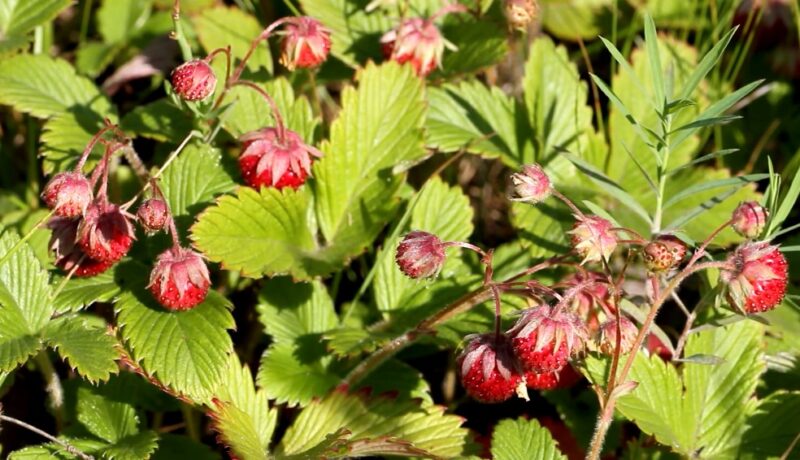
Ideal for: Sandy or moist environments near the coast
Sand Strawberry is an excellent choice for coastal areas with sandy or moist soils. This ground cover produces charming white flowers followed by small, edible strawberries. It’s a low-maintenance plant that adds a touch of whimsy to any garden.
- Sand Strawberry, also known as Beach Strawberry, is native to coastal bluffs and sand dunes in California, making it well-suited for coastal regions in Southern California.
- It is a fruiting, evergreen groundcover, maintaining its foliage year-round, which is advantageous for consistent ground coverage and aesthetic appeal.
- This plant is drought-tolerant, making it ideal for the dry conditions often experienced in Southern California.
- Sand Strawberry spreads to form a dense ground cover, which is useful for stabilizing slopes and sand dunes, helping to prevent soil erosion.
2. Hearts Desire
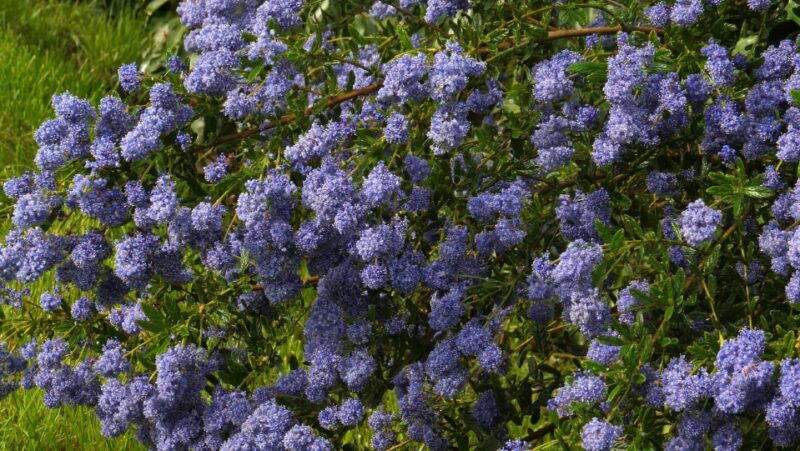
Ideal for: Coastal gardens
Hearts Desire is a resilient cultivar perfect for coastal gardens. This plant offers stunning blue flowers that attract pollinators, adding both beauty and ecological value to your garden. Its drought-tolerant nature makes it an excellent choice for low-water landscapes.
- “Heart’s Desire” is a low-growing evergreen ground cover that typically reaches a height of no more than six inches, and can spread up to four feet, making it ideal for covering large areas.
- This plant is native to California, indicating its suitability for coastal conditions and well-drained soils.
- “Heart’s Desire” produces beautiful lilac-colored flowers, adding a splash of color to gardens during its blooming season.
- It is more cold-hardy compared to other varieties like ‘Centennial’ or Ceanothus hearstiorum, which adds to its versatility in different climates.
1. Carmel Sur Manzanita
Ideal for: Part-shade inland, full sun near the coast
Carmel Sur Manzanita is a fantastic option for those looking to add a touch of elegance to their garden. This plant thrives in part-shade areas inland and full sun near the coast, making it a versatile choice. Its low-growing habit and glossy green leaves make it an attractive ground cover that blends well with other native plants.
- Carmel Sur Manzanita is a low-growing evergreen shrub that typically reaches up to one foot in height and spreads about six feet wide. It has light green leaves that provide a dense and attractive ground cover.
- This plant has a fast-spreading, mounding habit, making it an excellent choice for ground cover. The plant is characterized by its red branchlets and small, dark green leaves.
- Carmel Sur Manzanita is adaptable to various soil types, including heavy soils. It prefers well-drained soil but can tolerate clay. It is water-tolerant, making it suitable for gardens with regular watering as long as the water doesn’t stand on the surface.
- This manzanita thrives in part shade inland to full sun near the coast, with some extra water if planted near the coast. It is recommended for erosion control due to its dense and spreading growth.
Why Choose Ground Cover Plants?
Ground cover plants are incredibly versatile. They help retain soil moisture, reduce weed growth, and add aesthetic value to your garden.
For homeowners who use a significant amount of water outdoors, ground covers can also be a water-saving alternative. Here are some fantastic choices to consider:
Alternatives to Natural Ground Covers
If you’re looking for ground covers that require even less maintenance, consider some artificial options:
Artificial Grass
Artificial grass requires no watering or maintenance, making it an excellent alternative for lush lawns. It’s perfect for areas where natural grass struggles to grow and offers a green, manicured look year-round.
Wood Chips or Bark
Wood chips or bark serve as a low-care ground cover that helps retain soil moisture and limit weed growth. This option adds a natural look to your garden and can be a cost-effective solution for large areas.
Gravel
Gravel is an affordable ground cover that helps control erosion and retains soil moisture. It’s perfect for pathways, driveways, or any area where you want a low-maintenance, durable surface.
Water Conservation Tips
Given that homeowners use a significant portion of their water outdoors, here are a few tips to help conserve water in your garden:
- Use Drip Irrigation: Drip irrigation systems deliver water directly to the roots of plants, reducing water waste.
- Mulch: Applying mulch around your plants helps retain soil moisture and reduce evaporation.
- Choose Drought-Tolerant Plants: Opt for plants that require less water, such as the ground covers listed above.
- Water Wisely: Water your garden in the early morning or late evening to minimize evaporation.
Final Words
Southern California’s unique climate offers both challenges and opportunities for gardeners. By choosing the right ground cover plants, you can create a beautiful, low-maintenance garden that conserves water and thrives in our sunny, sometimes arid environment.
It doesn’t matter if you prefer the vibrant blooms of Lantana, the striking foliage of Blue Chalk Sticks, or the practicality of artificial grass, there’s a ground cover option that’s perfect for your garden.


